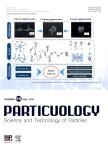Numerical analysis of frictional behavior of dense gas-solid systems
Numerical analysis of frictional behavior of dense gas-solid systems作者机构:Gamma Technologies LLC. 601 Oakmont Ln Suite 220. Westmont IL 60559 USA Department of Chemical and Biological Engineering Illinois Institute of Technology. Chicago IL 60616 USA Wanger Institute for Sustainable Energy Research Illinois Institute of Technology Chicago IL 60616 USA
出 版 物:《Particuology》 (颗粒学报(英文版))
年 卷 期:2017年第15卷第3期
页 面:178-190页
核心收录:
学科分类:07[理学] 0817[工学-化学工程与技术] 0805[工学-材料科学与工程(可授工学、理学学位)] 0703[理学-化学] 0702[理学-物理学]
主 题:Solid frictional pressure Particle particle frictional forcesL valve Computational fluid dynamics (CFD)Polydispersity Angle of repose
摘 要:Dense gas-solid flows show significantly higher stresses compared with dilute flows, mainly attributable to particle-particle friction in dense particle flows. Several models developed have considered particle-particle friction; however, they generally underestimate its effect in dense regions of the gas-solid system, leading to unrealistic predictions in their flow patterns. Recently, several attempts have been made to formulate such flows and the impact of particle-particle friction on predicting flow patterns based on modified frictional viscosity models by including effects of bulk density changes on frictional pressure of the solid phase. The solid-wall boundary is also expected to have considerable effect on friction because particulate phases generally slip over the solid surface that directly affects particle-particle frictional forces. Polydispersity of the solid phase also leads to higher friction between particles as more particles have sustained contact in polydispersed systems. Their effects were investi- gated by performing CFD simulations of particle settlement to calculate the slope angle of resting material of non-cohesive particles as they settle on a solid surface. This slope angle is directly affected by frictional forces and may be a reasonably good measure of frictional forces between particles. The calculated slope angle, as a measure of frictional forces inside the system are compared with experimental values of this slope angle as well as simulation results from the literature.



